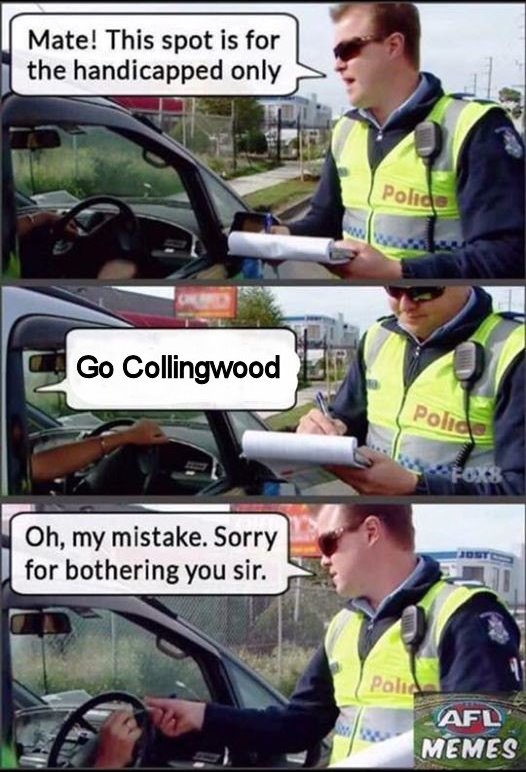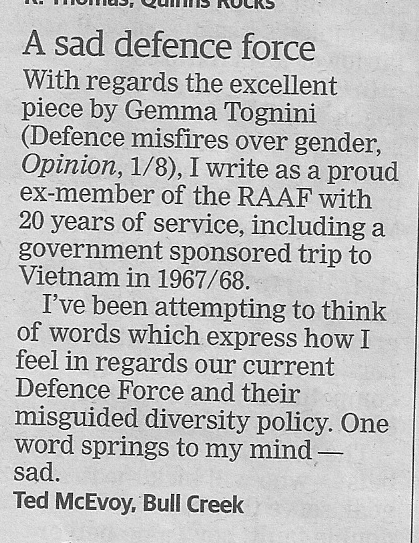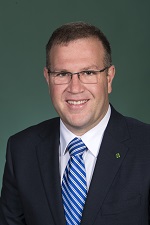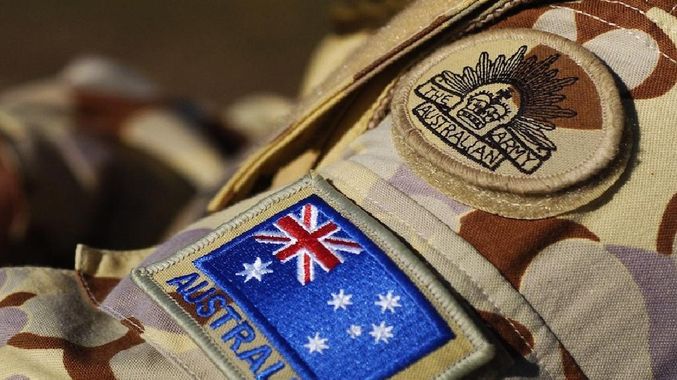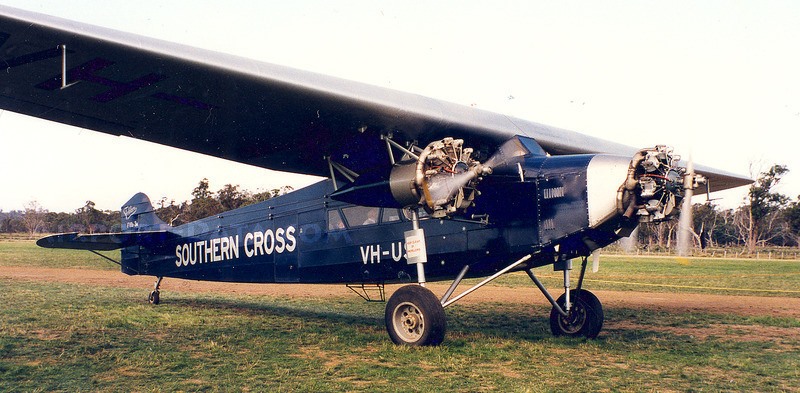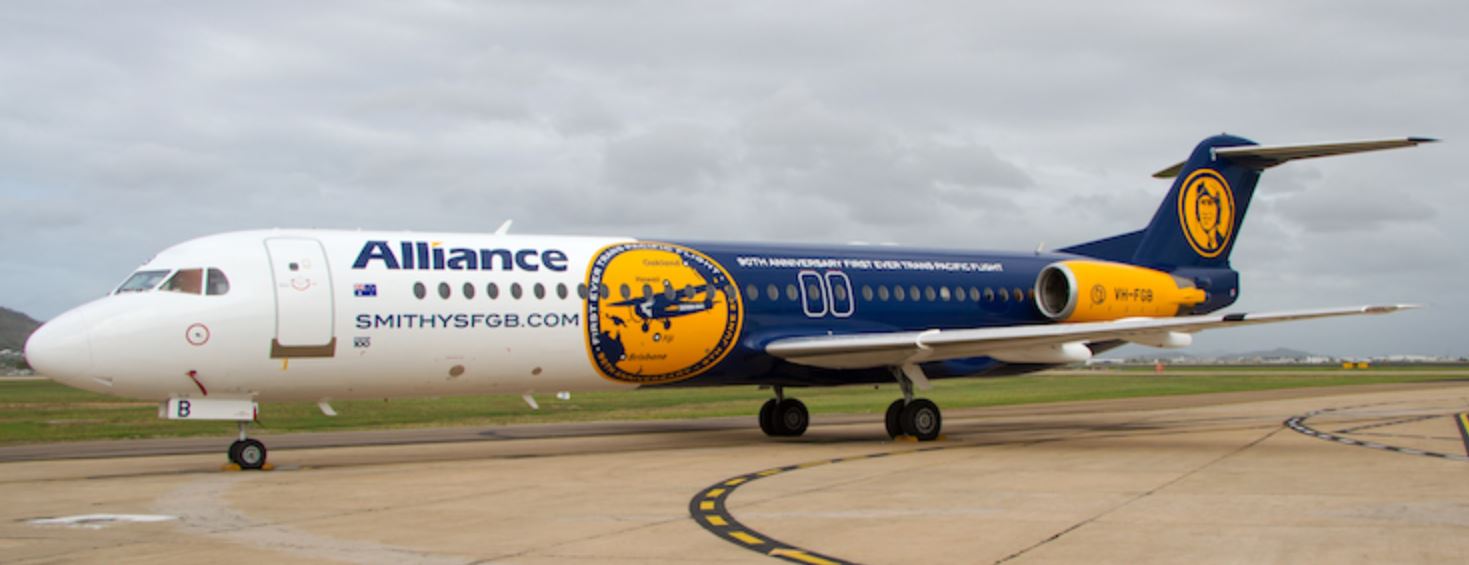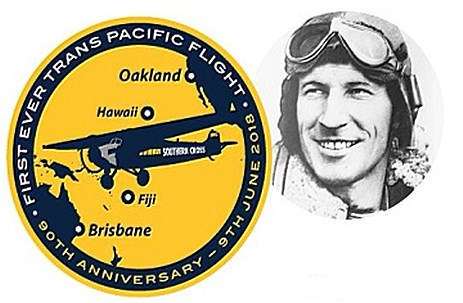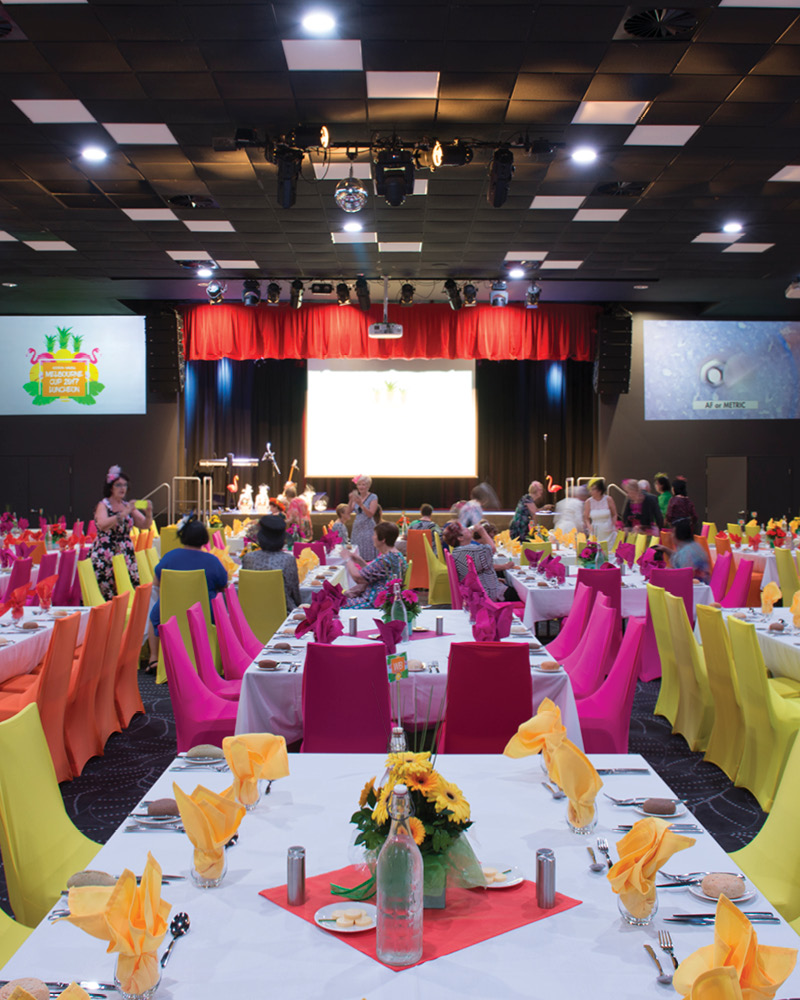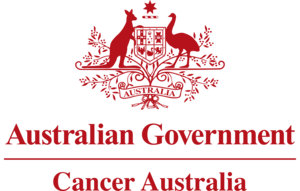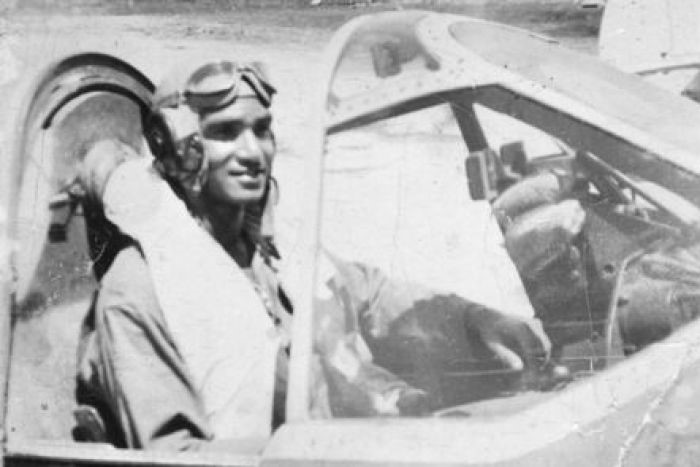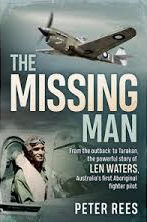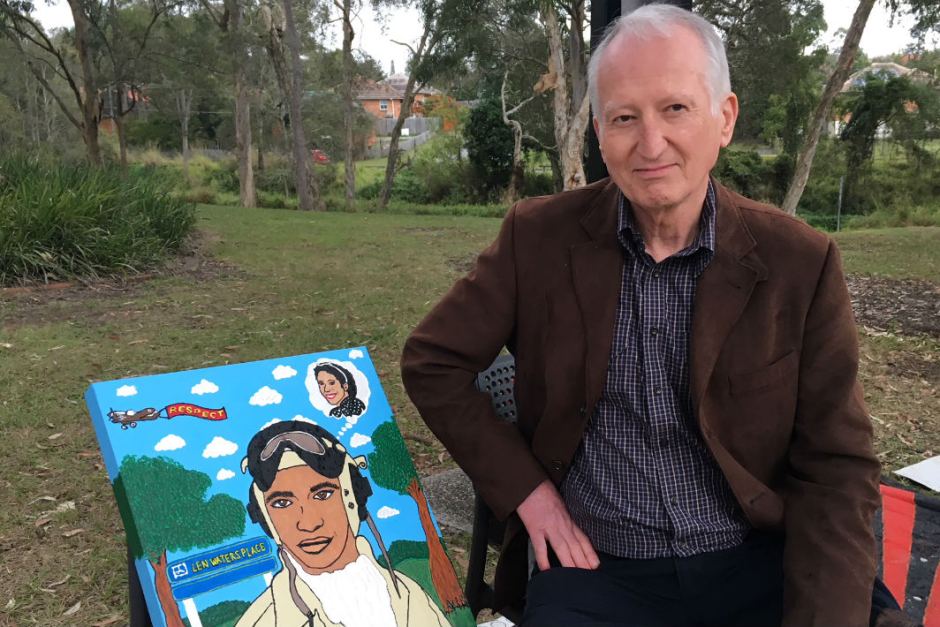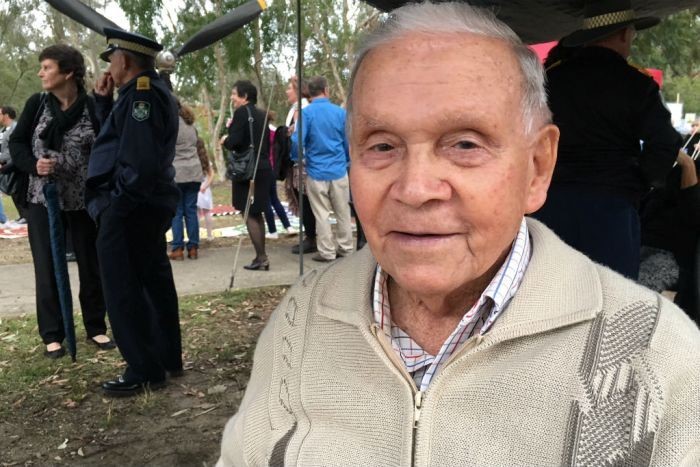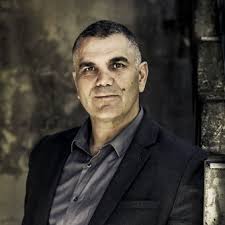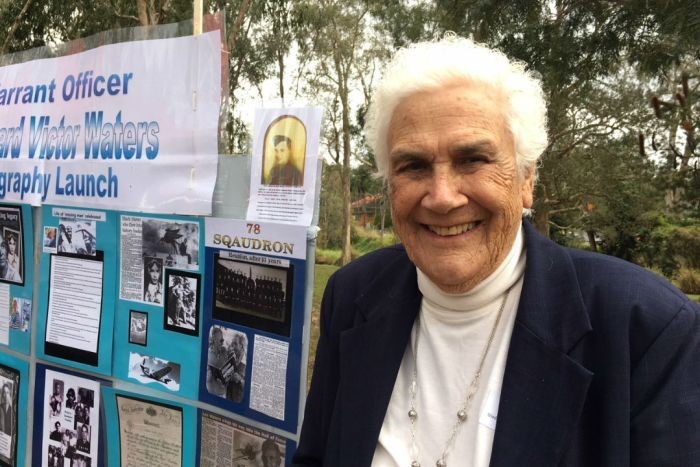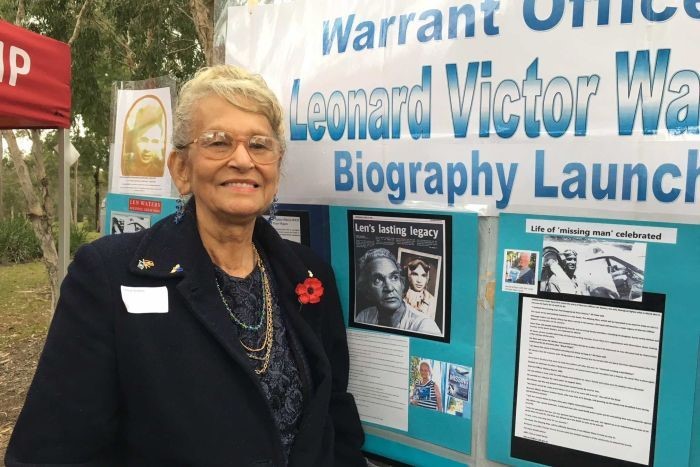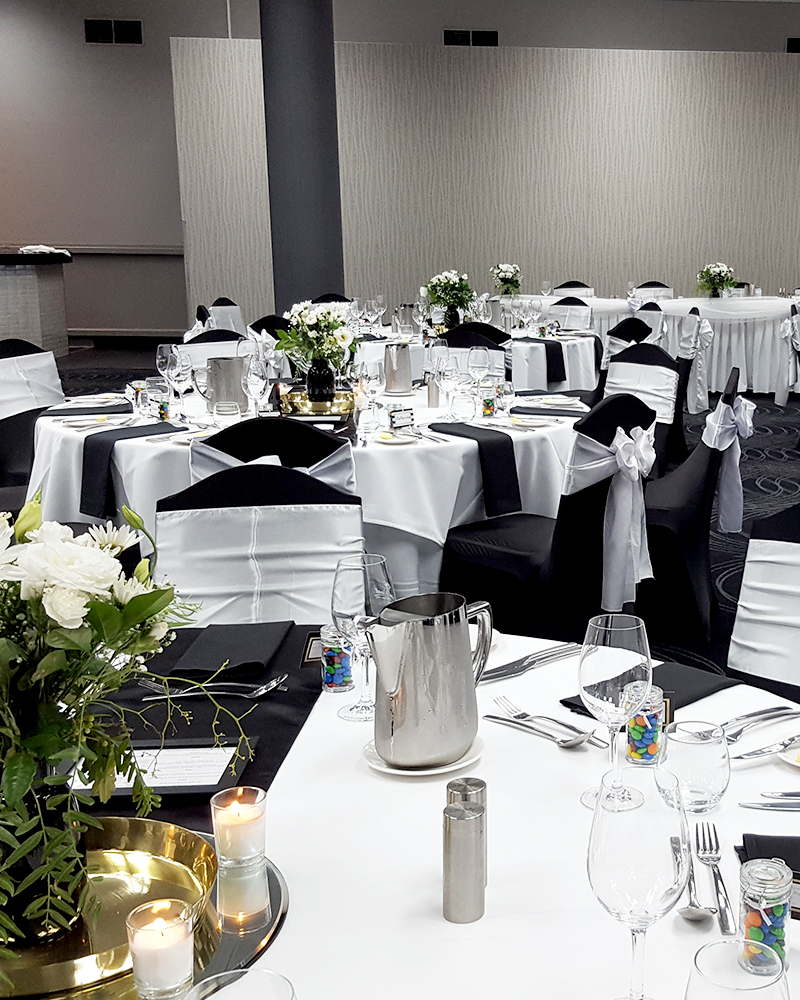|
|
||||||||||||||||||||
|
||||||||||||||||||||
|
Privacy Policy | Editorial Policy | Profit Policy | Join the Association | List of Members | Contact us | Index | Links |
||||||||||||||||||||
|
Back Go to page: 1 2 3 4 5 6 7 8 9 10 11 12 13 14 15 16 17 18 19 20 Forward
|
||||||||||||||||||||
|
Out in the Shed with Ted.
Ted McEvoy. |
||||||||||||||||||||
|
|
||||||||||||||||||||
|
Click the pic above to access the Kedron Wavell Services club web site.
|
||||||||||||||||||||
|
The Department of Veterans’ Affairs (DVA) provides a very helpful booklet titled “Planning Ahead” which will help veterans and their families prepare for a bereavement. It is a guide to putting your affairs in order and can be downloaded from HERE.
There is also another very useful booklet titled “What to do when death comes visiting” which can be downloaded from HERE.
We strongly recommend you get both.
The Financial Assistance paid by DVA towards the cost of a funeral for a veteran depends on whether the Veteran is classified under the Veterans Entitlement Act (VEA) or the Military Rehabilitation and Compensation Act (MRCA).
It's different, unfair and it's discrimitary!
A Veteran is classified under the VEA if prior to July 2004 he/she:
For further information see DVA’s info page HERE
A Veteran is classified under the MRCA if he/she served on or after 1 July 2004 and was:
For further information see DVA’s fact sheet HERE
Funeral Benefits provided under the VEA.
A Funeral Benefit is a one-off tax-free payment made by the DVA to assist toward the funeral costs of veterans and, in some cases, their dependants. The benefit is a payment against the cost associated in the burial or cremation of remains.
A Funeral Benefit will be granted in respect of funeral expenses of an Australian VEA veteran who, at the time of death, was:
A funeral benefit may also be payable for Australian veterans and former members who died:
OR
A Funeral Benefit payment comprises up to $2000 towards the funeral costs of an eligible veteran or dependant who died on or after 1 July 2007.
An application for the Funeral Benefit from the estate of a deceased (VEA) Veteran must be made within 12 months of the death of the Veteran. To apply, use THIS form.
Benefits to those in need
A Funeral Benefit may be granted to a person responsible for the funeral expenses in respect of a veteran or former member of the forces who died in needy circumstances.
DVA classifies a person “In Need” as having less than $5,000 in the bank and not owning their own home.
Funeral Benefits provided under the MRCA.
Compensation will be awarded for the cost(s) of the funeral of a deceased member if:
Funeral expenses can be paid under the MRCA directly to the person who made the claim (including the deceased’s dependant or legal personal representative). If the funeral expenses have not been paid, the MRCA provides that funeral expenses up to the maximum amount payable can be awarded to the person or company which is conducting, or which conducted, the funeral.
People making a claim for funeral expenses under MRCA can claim up to a maximum of $12,053.62 (up to Sept 2018 – when that figure will be reviewed). Claimants must complete the claim form which can be found HERE.
Bereavement Assistance.
A Bereavement Assistance payment is a one-off, non-taxable payment designed to help with the costs that may follow the death of a pensioner. Where the deceased pensioner was a member of a couple, the bereavement payment will assist the surviving partner to adjust their finances following the cessation of the pensioner's payments.
Once again, the Assistance is dependent on whether the Veteran is classified under the VEA or the MRCA.
Those covered by the VEA.
There are two types of bereavement payments under the VEA:
An income support payment includes:
If the deceased was receiving both disability pension and an income support payment (ie: Service Pension), it is possible for bereavement payments to be payable in respect of both payments.
If the pensioner was a member of a couple and if the couple were:
and the pensioner was receiving a disability pension the payment is usually made to the surviving partner.
However, if the pensioner was receiving:
the surviving partner is only entitled to a bereavement payment in respect of that payment (one of the four above) if they were themselves in receipt of a service pension, income support supplement, social security pension or the DFISA at the time of the pensioner’s death.
How to claim.
Member of a couple. You do not generally have to apply for a bereavement payment if the deceased person was a member of a couple. Payment will occur automatically upon notification of the pensioner’s death to DVA.
Single Veteran.
If the veteran was single, died in needy circumstances and was receiving a Special Rate (T&PI) or Extreme Disablement Adjustment (EDA) disability pension prior to their death, then a bereavement payment may be able to be made to the estate. To apply for a bereavement payment for a single veteran, the person administering the veteran’s estate must fill out the form HERE and return it to DVA.
An application for payment must be made within 12 months of the veteran's death.
How much bereavement payment can be paid under VEA.
The amount of bereavement payment depends on the pension that the pensioner was receiving prior to their death and whether they were a member of a couple or single.
Income support bereavement payment - member of a couple.
When a Disability Pension receiving Veteran was a member of a couple the surviving partner is eligible for a bereavement payment, the disability pension bereavement payment paid to the surviving partner is the equivalent of six fortnightly pension instalments, at the rate of pension paid prior to death.
When an Income Support pensioner was a member of a couple, the surviving partner is eligible for a bereavement payment, that payment continues the pension entitlement payments of the deceased person for a period of 98 days (14 weeks) starting on the day on which the person died.
In most cases the surviving partner will also receive a lump sum payment made up of the difference between the new single rate of the Service Pension and the previous combined rates of each member of the couple, multiplied by 98 days.
eg: If the couple were receiving the max rate of Service Pension (as at 1 Sept) they would have been receiving $1,394.20 per fortnight ($99.59/day) between them. The single fortnightly rate at that time was $907.60 ($64.83/day). The daily difference between the couple rate and the single rate is $34.76. Therefore, the surviving partner would receive $34.76 times 98 = $3,406.48.
Example:
The partner of a TPI Veteran who was living with the Veteran and both were receiving the maximum Service Pension could receive on the death of the Veteran (at 1st Sept 2018):
For an illness-separated couple, the bereavement payment is calculated using the partnered rate of pension (as if they were not living apart), rather than the illness-separated rate that the couple had been previously receiving.
The actual amount deposited may have been adjusted because pensions are paid in advance. In the event that a pension payment is made after the pensioner's date of death this will be included in the bereavement payment calculation. The bereavement payment lump sum will be automatically paid into the account where the surviving partner's pension is paid.
Income support bereavement payment – single pensioner.
When a single income support pensioner dies, one instalment of the rate of pension that the pensioner was receiving prior to their death is paid to their estate.
Those covered by MRCA
If the deceased serving or former serving member was receiving incapacity payments, permanent impairment periodic payments, or the Special Rate Disability Pension (SRDP) under the MRCA, their wholly dependent partner may be entitled to a bereavement payment. If there is no wholly dependent partner, the payment can be made to a dependent child or dependent children of the deceased.
The payment is equal to 12 instalments of the:
that the deceased member was either receiving, or was entitled to receive, at the time of his or her death.
To claim the surviving dependant partner must complete this claim FORM. In the case of a partner, a claim can also be made in the form of a signed letter stating that the serving or former member has died. The letter should be accompanied by evidence from the partner that he or she was living with the member at the time of death and evidence to establish that he or she was wholly dependent on the serving or former member for the economic support at the time of death. Partners and eligible young persons living with the serving or former member at the time of death are considered to wholly dependent.
Evidence of financial dependency and of the partner’s living with the
serving or former member at the time of death can be made in the form of a
properly completed Statutory Declaration. A claim can also be made by or on
behalf of a child or children, who was or were, wholly dependent on the
Transportation of the body costs:
Where a Funeral Benefit for a deceased veteran is payable and a charge was made by the funeral director expressly for transporting the body of the deceased veteran from the place where the veteran died to the place where the veteran ordinarily resided immediately before the veteran died, a sum equal to a reasonable charge for transporting the body of the veteran may be paid.
Eligibility for this additional payment is dependent on:
The additional payment for charges for transporting the veteran’s body does not apply to a charge for transporting the body within the metropolitan area or outside Australia.
A Funeral Benefit may also be payable in respect of the funeral of a dependant (War Widow/Widower), wholly dependent partner, child under 16 or full-time student under 25 of a deceased member where the dependant died in severe financial need.
To make a claim you must fill in the form HERE
War Widow(er)s.
A War Widow or Widower is a person who was legally married to or was in a de facto relationship with an Australian Veteran immediately before the Veteran’s death and who has not since remarried or entered into a de facto relationship with another person.
The War Widow(er) will be granted a tax free pension automatically if the Veteran was:
As at 1st Sept 2018, the War Widow(er)’s pension rate was $922.50 per fortnight.
Other Benefits:
|
||||||||||||||||||||
|
The frequency of sexual activity of senior males depends on where they were born.
Statistics just released from Statistics Australia and the United Nations B.O.H. Team reveal that: Australian men, between 55 and 85 years of age, will, on average, have sex two to three times per week (and a small number a lot more), whereas Japanese men, in exactly the same age group, will have sex only once or twice per year - if they are lucky.
This has come as very upsetting news to me and most of my mates at the Golf Club, as none of us had any idea we were Japanese.
|
||||||||||||||||||||
|
Changes to process for allied health referrals.
The way that GPs refer DVA cardholders to allied health professionals is set to change from July 2019 following adjustments foreshadowed in the May 2018–19 Budget.
Under current DVA arrangements, a GP may refer a client to allied health services for up to a year at DVA’s expense (except for dental and optical, for which no referral is required). For chronic conditions, the GP can make an ongoing referral.
Under the new arrangements, which will be in place from 1 July 2019, GPs will only be able to make a referral to allied health services at DVA’s expense for up to 12 sessions or one year, whichever comes sooner. This new arrangement will also apply to those clients with a chronic condition. Dental and optical services will still not need a GP referral.
The new arrangements will be called the ‘treatment cycle’. The treatment cycle is designed to improve quality of care for DVA cardholders.
At the end of the treatment cycle, the allied health provider will report back to the GP who will assess whether further treatment is required. If it is needed, the GP may refer the client for a further treatment cycle at DVA’s expense of up to 12 sessions, or may refer them to another provider if that better suits the patient’s needs, or may consider another type of treatment.
The treatment cycle will not impose any hard ‘cap’ or limit on the number of clinically required services. DVA clients will receive as many services as determined to be clinically necessary by their GP.
DVA clients attend their GP on average 12 times per year. Seeking a referral for allied health services can be done as part of any GP visit.
DVA will consult with allied health providers, medical associations and ex-service organisations on the treatment cycle changes in the lead-up to their implementation, and evaluate their impact during the first year.
The referral changes will allow GPs to ensure that veterans are receiving the best possible care. This is to make sure that veterans are benefiting from their treatment, and to examine whether there may be better treatment options available.
Subject to the success of the new treatment cycle, from February 2021, DVA plans to update key parts of the allied health schedules to help meet future health needs.
|
||||||||||||||||||||
|
|
||||||||||||||||||||
|
Click HERE
|
||||||||||||||||||||
|
DVA online services now available through MYGOV.
VETERANS and their families will join millions of Australians transacting with government online through myGov. As part of its program to modernise and streamline services, the Department of Veterans’ Affairs (DVA), in partnership with the Department of Human Services has made it simpler for clients to do their online transactions with government by linking all of their DVA online services with myGov. You can see more HERE.
|
||||||||||||||||||||
|
|
||||||||||||||||||||
|
|
||||||||||||||||||||
|
|
||||||||||||||||||||
|
Australian Defence Force misfires over PC gender campaign.
On the 1st August, the West Australian Newspaper ran an excellent article written by Gemma Tognini. The article describes the way the absurd and insidious PC juggernaut has, like a Triffid, infiltrated the ADF and continues to do so.
(And it looks like the ADF is on the way out too, DEFENCE is too strong a word for the puritans running the game these days, Army vehicle number plates now call it the "Australian Defence Organisation" )
Recently those fearsome warriors in the Navy decided to paint the nail on their little finger pink in support of the 100 Days for Change campaign.
The Defence Department sent out a tweet that the navy had recently become involved in the campaign, to encourage gender equality and diversity within its ranks. It described the part manicure as a visual indication of support.
Click HERE to read the article - turns your stomach.
As a follow-up to that article, I felt compelled to submit a letter to the editor of the West Australian newspaper(see below). To my mind, during my time in the Australian military, nobody gave a rat’s as to which side you batted, the colour of your skin or which God you worshipped. We had a commitment to the job and to support those with whom we served.
I am saddened to see a once-proud institution being swept along in the tide of “social engineering”.
|
||||||||||||||||||||
|
|
||||||||||||||||||||
|
A few days after my "Letter to the Editor" appeared in the West Australian, I received a letter from Ben Morton MP, the Federal Member for the Western Australia seat of Tangney. Ben is a member of the Liberal Party of Australia and is the Chair of Joint Standing Committees on the National Capital and External Territories.
You can read his letter HERE.
There's hope for the side yet.
|
||||||||||||||||||||
|
Click HERE if you'd like to comment.
|
||||||||||||||||||||
|
Australian Defence Force denies it has banned employees using ‘he’ and ‘she.’
THE Australian Defence Force has denied soldiers would be banned from addressing each other as "he" or "she" in an effort to reduce bullying. THE Australian Defence Force has denied reports that an army document suggests banning soldiers from addressing each other as "he" or "she" in an effort to reduce bullying.
It all stems from the 22 Page " LGBTI Guide" issued in 2017 for the Australian Defence Force Academy (ADFA) which attempts to ensure staff are "better informed when making decisions regarding the lesbian, gay, bisexual, transgender, and/or intersex (LGBTI) community".
"To meet the challenge of leadership and military professionalism the learning environment and culture at ADFA must be inclusive and diverse," the document reads. "It is my intent to ensure that all ADFA staff are provided with the knowledge and skills required to manage, train and support an increasingly diverse workforce."
It then breaks down terms associated with a range of sexual and gender identities, and even provides a diagram to help staff understand the differing terms, however, under the guidance section, a topic labelled "Language and Behaviour" has sparked reports that gender-specific terms have been "banned" within the framework of the organisation — which employs 80,000 Australians.
"It is important to be mindful of respectful and disrespectful behaviours or language in relation to LGBTI members," it reads. "In the event that you make a mistake, the best course of action is to apologise, listen to anything the member’s wishes to say in response, and then move on with the conversation. "Considerations for staff include: Avoiding stereotyping, using the correct pronouns and preferred name of sex or gender diverse members wherever possible, and using the gender neutral language when referring to relationships or gender identities.
"All ADFA personnel need to appreciate that the deliberate use of non-inclusive language, exclusion and bullying due to gender diversity are some of the behaviours which can affect LGBTI members."
But the ADF has denied this means that using "he" or "she" would be considered "bullying".
The document appears to suggest rather that the gendered pronouns shouldn’t be used by a staff member, only if the person they are referring to specifically asks them not to. "Misgendering can have a significant effect on transgender individuals as it is often an expression of a lack of understanding of acceptance of that person’s identity," the guide says.
The ADF later released a statement saying it had not issued a "directive" on gender-neutral language. "ADFA Cadets are not being told that they should not use terms like him or her. The Department has not, and is not intending, to issue a directive on the use of gender-neutral language," the statement said. The ADF states there are examples of its 80,000 employees using gender-specific language every day. "For example, every day ADFA cadets address their seniors as Sir and Ma’am. This has not, and is not, changing," he said.
"There are around 80,000 personnel in the Australian Defence Force. Supervisors and commanders are required to lead teams from all walks of life, who often work, eat and sleep in proximity for extended periods. "Commanders must be skilled in harnessing these diverse backgrounds and experiences in their teams to deliver what is required. "Effective teamwork is at the centre of ADF capability and it is built on respect and cohesion. Members of the Australian Defence Force are required to work with each other, and address each other, in a respectful manner. "This includes members addressing each other by rank and using the customary military compliments."
There is definitely something wrong somewhere!!!
|
||||||||||||||||||||
|
I think THIS is funny.
|
||||||||||||||||||||
|
|
||||||||||||||||||||
|
A birthday cake ceremony, Vung Tau - June 1966
|
||||||||||||||||||||
|
|
||||||||||||||||||||
| Second in from the left, sans shirt, is moi (one of the workers), to the right of the cook (in the white hat) is the CO, Jack Espie, behind him, partly hidden is John Griffiths and to the right of the CO is the EngO, John Connell. That old Pommy gentlemen, Reg "Tommy" Thompson, is far right. | ||||||||||||||||||||
|
A birthday cake cutting ceremony to celebrate either or both the anniversary of the formation of RAAF Transport Flight Vietnam or for the anniversary of the renaming of 35 Squadron, known as Wallaby Airlines, occurred on 1st June 1968 in the hangar at Vung Tau.
On 1 June 1966, RAAF Transport Flight Vietnam was redesignated No. 35 Squadron at Vung Tau in South Vietnam.
|
||||||||||||||||||||
|
I've crunched the numbers in my retirement account and after reviewing all options the question is, who will be wearing the mask and who will be driving the getaway car.
Kedron Wavell Services Club
|
||||||||||||||||||||
|
|
||||||||||||||||||||
|
|
||||||||||||||||||||
|
Remembering the first trans-Pacific flight - 90 years ago.
At 10.50am on Saturday 9th June 2018, Australian Transport Safety Bureau (ATSB) Chief Commissioner, Greg Hood, along with more than 90 other passengers landed at Brisbane Airport on board a specially painted Alliance Airlines’ Fokker 100, VH-FGB.
Their touchdown was exactly 90 years to the minute when Fokker F.VIIb/3m, called Southern Cross, and its four crew completed the first trans-Pacific flight from the USA to Australia.
As the historic records show, Charles Kingsford-Smith, the pilot-in-command of the Southern Cross, along with his co-pilot Charles Ulm, navigator Captain Harry Lyon and radio operator James Warner, took off from Oakland, California at 8.53am on 3st May, 1928 bound for their first stop in Hawaii. The tri-motor Southern Cross landed at Honolulu at 9.49am on 2 June and departed the following day at 5.20am on its second leg bound for Suva, Fiji.
Airborne for a staggering 34 and half hours, the Southern Cross landed in Suva’s Albert Park at 2.21pm on 4th June after flying around 5,000 kilometres. After three days on the island, the Southern Cross left Fiji on its last leg to Brisbane at 2.52pm on 8 June, some 2,400 kilometres to the east. Around eight and a half days after leaving Oakland, including over 83 hours in the air and covering about 11,670 kilometres, the Southern Cross landed at Brisbane’s Eagle Farm Airport at 10.50am on 9 June 1928, where they were welcomed by over 15,000 people.
“I am greatly honoured to have been on board for this significant historical flight,” Mr Hood said. “Today, we also flew in a Fokker, in the comfort and with the safety that ‘Smithy’, Ulm, Lyon and Warner would only have dreamed of 90 years ago. Their feat of safely completing the first trans-Pacific flight, set the bar high for aviation safety in Australia.”
Alliance Airlines, now the largest operator of Fokker aircraft in the world, is based at Brisbane Airport, not far from where the Southern Cross touched down 90 years ago.
|
||||||||||||||||||||
|
|
||||||||||||||||||||
|
“I would like to thank Alliance Airlines’ Chairman Steve Padgett for inviting the ATSB to be a part of the celebrations to mark a significant event in Australian aviation’s history,” Mr Hood said. “The ATSB is keen to see important events and achievements in aviation and other modes of transport maintained and acknowledged.
In fact, we are currently preparing a number of historical air accident items that we have in our possession to be displayed prominently in the reception area of our Canberra head office.”
|
||||||||||||||||||||
|
An 85-year-old man was requested by his doctor for a sperm count as part of his physical exam. The doctor gave the man a jar and said, “Take this jar home and bring back a semen sample tomorrow.” The next day the 85-year-old man reappeared at the doctor’s office and gave him the jar, which was as clean and empty as on the previous day. The doctor asked what happened and the man explained. “Well, doc, it’s like this–first I tried with my right hand, but nothing. Then I tried with my left hand, but still nothing. Then I asked my wife for help. She tried with her right hand, then with her left, still nothing. She tried with her mouth, first with the teeth in, then with her teeth out, still nothing. We even called up Arleen, the lady next door and she tried too, first with both hands, then an armpit, and she even tried squeezin’ it between her knees, but still nothing.” The doctor was shocked! “You asked your neighbour?” The old man replied, “Yep, none of us could get the damn lid off.”
|
||||||||||||||||||||
|
The Ultimate barby.
Is THIS is the ultimate barby - a jet barby?? |
||||||||||||||||||||
|
|
||||||||||||||||||||
|
Kedron Wavell Services Club Events Rooms.
The Kedron Wavell Services Club provides a level of service and professionalism unprecedented in the Brisbane North region. The Events Centre offers a range of locations suitable for events of up to 500 guests, including seven air-conditioned event rooms. Featuring the latest technology and equipment, and first-class catering, Events @ Kedron-Wavell can tailor a package to suit you.
|
||||||||||||||||||||
|
|
||||||||||||||||||||
Blue Pacific Room.
With elegant décor, high ceilings & a pillar-less design, the Blue Pacific allows for a variety of room layouts to suit your specific needs. This space caters for 150-500 guests in a variety of configurations.
The Blue Pacific offers a large professional stage with state of the art sound & lighting facilities. Two fully-stocked bars allow ease of service to your guests.
Capacities and available configurations are as follows:
Banquet: 400 Open Ended: 350 Theatre: 600 Cocktail: 500 Size: 500m2
Bookings in the Blue Pacific require an Audio Visual Technician to operate sound and lighting. Price on application.
Set up fees may apply in the Blue Pacific, please speak to Events @ Kedron-Wavell regarding your requirements.
|
||||||||||||||||||||
|
Non-Liability Health Care (NLHC).
It seems many of our members are not aware of recent changes to the DVA rules which guarantees certain entitlements to all current and former ADF personnel. Some of our members have personally paid for their own treatment for cancer treatment/Psychiatrists sessions etc. This is an unnecessary financial burden as we are covered under the Department of Veterans Affairs legislation.
It is unfortunate that some members have refrained from applying for mental conditions such as depression/anxiety etc as they mistakenly think that any problem has to be ‘service related’. This is no longer the case!...see below.
Non-Liability Health Care (NLHC) allows current and former ADF personnel, depending on their eligibility, to receive treatment for the following conditions:
There is no need to establish that these conditions were caused by your military service.
Who is eligible?
All current and former members of the ADF with at least one day of continuous full-time service (CFTS) are eligible for treatment of any mental health condition. This includes Reservists who have rendered any period of CFTS and national servicemen.
In addition, from 1st July 2018 Reservists without continuous full-time service may be eligible for mental health treatment under NLHC if they rendered Reserve Service Days with:
In the case of a serious accident, this means an accident which occurred during a training exercise undertaken by Defence in which a member of the ADF dies or sustained a serious injury. The person would have needed immediate treatment as an inpatient in a hospital. Examples of serious injuries are:
NLHC treatment of Cancer (Malignant Neoplasm) and Pulmonary Tuberculosis is available to those with the following types of service:
How do I apply?
There is no need to lodge an application form for NLHC for your mental health condition. You can email your request for NLHC for any mental health condition to NLHC@dva.gov.au, or apply over the phone by calling DVA on the General Enquiries numbers 1800 555 254.
If you automatically received a DVA Health Card - Specific Conditions (White Card) after transitioning from the ADF, you are eligible to receive NLHC mental health treatment immediately. There is no need to apply for mental health treatment if you have received a White Card for this reason. Contact DVA if you have any questions about your treatment eligibilities.
For mental health conditions, a diagnosis is not required.
To access NLHC treatment arrangements for cancer or pulmonary tuberculosis, you need to fill out application form D9215 Application for Health Care for Cancer (Malignant Neoplasm) and Tuberculosis and return it to DVA using the directions provided on the form.
For cancer and pulmonary tuberculosis, a diagnosis by an appropriately qualified health professional is also required as part of the application process. A diagnosis of cancer (malignant neoplasm) or pulmonary tuberculosis can be made by your treating medical practitioner.
You can get further details from the DVA fact sheet HERE.
|
||||||||||||||||||||
|
Murphy says to Paddy, What ya talking into that envelope for?" Paddy - "Because I'm sending a voicemail ya fool!"
|
||||||||||||||||||||
|
The story of Australia's only Indigenous WWII fighter pilot, Len Waters.
|
||||||||||||||||||||
|
|
||||||||||||||||||||
|
Len Waters was Australia's first and only known Indigenous fighter pilot during World War II. He achieved the unthinkable, flying an elite Kittyhawk fighter aircraft, aptly named Black Magic, for the Royal Australian Air Force.
But like many of the estimated 3,000 Aboriginal and Torres Strait Islanders who served during the Second World War, Mr Waters returned home as a forgotten hero.
Len Waters flew 95 operational sorties with 78 Squadron from 1943 to 1945 but when he returned home, he became a 'missing man' in Australia's wartime history. It remained this way until his death in Cunnamulla, in western Queensland, in 1993, but now, Len Waters' story will be told in the book “Missing Man” by author Peter Rees.
Mr Rees and the extended Waters family held a book launch at Len Waters Place at Inala this week, which drew a crowd of about 300 people.
|
||||||||||||||||||||
|
|
||||||||||||||||||||
|
Author Peter Rees.
|
||||||||||||||||||||
|
Peter Rees first decided to write about Len Waters when he heard that Badgery's Creek future Airport at Sydney could be named after the fighter pilot. He said the story had "intrigued" him. "An Indigenous fighter pilot. The first and only. What an extraordinary feat in 1940s Australia,"
Mr Rees said. "This was a story I did not know; it just had to be written. This book is about the power of one — one man's life, one man's story.
"Through the lens of one man's life, the larger story of racial discrimination and its ramifications for Indigenous people, generally, could be brought home to the Australian community in a very personal way. "A man who breaks through the barriers of poverty, racial discrimination and limited schooling to realise a boyhood dream to fly."
Mr Waters' brother Kevin, who still lives in St George, Queensland, said he was very proud of how things had changed in Australia since he was young. "Things are so much easier now than they were back in my days. As I say, you were a Murri and you kept your place. That's the way it was. "
According to Kevin Waters, when his brother returned from the war, he had hoped to set up a regional aviation service in south-west Queensland. He had financial backing — all he needed was his civilian pilot's licence but he was rejected for this licence five times because of his Aboriginality. "They didn't think about his war service and his great record of flying. They didn't worry about the experience he had," Kevin Waters said.
|
||||||||||||||||||||
|
|
||||||||||||||||||||
|
Kevin Waters, brother of Len Waters.
|
||||||||||||||||||||
|
"It was just about his Aboriginality, that's all it came down to. It broke his heart."
Chris Sara, the recently appointed Director General of the Department of Aboriginal and Torres Strait Islander Partnerships said humanity was the one thing that united all Australians.
"We've seen throughout Australia, and we see in the pages in this book, that there are times when our sense of race and culture and identity is important. But there are times when our sense of humanity is even more important," he said.
"When Len Waters was getting shot at, there was no time for racism … that's the time for all of us to be connected by humanity and for all of us to be the best that we can.
"When we acknowledge and we embrace the sense of capacity of Indigenous Australians, and our ability to be exceptional, magical things can happen."
|
||||||||||||||||||||
|
|
||||||||||||||||||||
|
Gladys Waters, widow of Len Waters.
|
||||||||||||||||||||
|
Len Waters' eldest daughter, Lenise Schloss (right), a high school history teacher and a lecturer at the University of Canberra, said she had been trying to tell her father's story for years but people often didn't believe her "because it wasn't in history books". Despite this, she said her father always taught his children to chase their dreams and be proud of where they come from.
"As Father always said, the sky's the limit and you can always have a dream. And dreams can come true," she said. "You just have to believe in yourself, be honest, have pride, have dignity, integrity and be accountable. And it'll all pay off."
Click the pic below to see the video.
|
||||||||||||||||||||
|
|
||||||||||||||||||||
|
|
||||||||||||||||||||
|
A couple is lying in bed. The man says, 'I am going to make you the happiest woman in the world...' The woman replies, 'I'll miss you.......
The Kittyhawk Room. Kedron Wavell Services Club.
|
||||||||||||||||||||
|
|
||||||||||||||||||||
|
Situated on the ground floor, the Kittyhawk Room has an external entrance and a private foyer to make your guests arrival a breeze. Equipped with stage area and audio-visual facilities this spacious area is perfect for mid-size to large groups in a range of settings. Your guests will also have access to private bar facilities.
Capacities and available configurations are as follows:
Banquet: 220 Open Ended: 170 Theatre: 300 Cocktail: 300 Size: 360m2
|
||||||||||||||||||||
|
Q: What do you call an intelligent, good looking, sensitive man? A: A rumour.
|
||||||||||||||||||||
|
The proper way for girls to act.
Click HERE.
If anyone is looking for me - I'm in hiding.
|
||||||||||||||||||||
|
|
||||||||||||||||||||
|
Reproduced here without comment.
|
||||||||||||||||||||
|
|
||||||||||||||||||||
|
During the early weeks after the USS Fitzgerald was speared by a lumbering Philippine container ship, it was noteworthy that the captain and a couple of admirals were publicly named, but not the actual officer in charge, the officer of the deck. (OOD) The other person who should have kept the Fitz out of trouble is the person in charge of the combat information centre, the Tactical Action Officer. That individual is supposed to be monitoring the combat radar, which can detect a swimmer at a distance of two miles.
|
||||||||||||||||||||
|
|
||||||||||||||||||||
|
Not until a year later, when the final reports are made public and the guilty parties have been court-martialed, does the truth come out. The OOD was named Sarah, and the Tactical Action Officer was named Natalie, and they weren’t speaking to each other!!! The Tactical Action Officer would normally be in near constant communication with the OOD, but there is no record of any communication between them that entire shift!
Another fun fact: In the Navy that won WWII, the damage control officers were usually some of the biggest and strongest men aboard, able to close hatches, shore up damaged areas with timbers, etc. The Fitz’s damage control officer was also a woman, and she never left the bridge. She handled the aftermath of the accident remotely, without lifting a finger herself!
The OOD was Sarah Coppock, Tactical Action Officer was Natalie Combs. When I noticed last year that they were doing all they could to keep the OOD’s name out of the headlines, I speculated to my son that it was a she. Turns out all the key people (except one officer in the CIC) were female! Indeed, I did some searching, and Lt. Coppock pleaded guilty to dereliction of duty. Lt. Combs faced a hearing last month: In an 11-hour hearing, prosecutors painted a picture of Lt. Irian Woodley, the ship’s surface warfare coordinator, and Lt. Natalie Combs, the tactical action officer, as failing at their jobs, not using the tools at their disposal properly and not communicating adequately. They became complacent with faulty equipment and did not seek to get it fixed, and they failed to communicate with the bridge, the prosecution argued. Had they done those things, the government contended, they would have been able to avert the collision.
That two of the officers — Coppock and Combs — involved in this fatal incident were female suggests that discipline and training standards have been lowered for the sake of “gender integration,” which was a major policy push at the Pentagon during the Obama administration. It could be that senior officers, knowing their promotions may hinge on enthusiastic support for “gender integration,” are reluctant to enforce standards for the women under their command.
This was the story of Kara Hultgreen, the Navy pilot who died in a 1994 F-14 crash. Investigation showed that Kara Hultgreen had been allowed to proceed in her training after errors that would have meant a washout for any male pilot, but the Clinton administration was pushing for female fighter pilots, which resulted in a competition between the Navy and Air Force to put women into these combat roles. It is not necessary to believe that:
Of course, you may believe both (a) and (b), but it is (b) that gets people killed.
It seems obvious that the Pentagon (and the liberal media) sought to suppress full knowledge of what happened to the Fitzgerald in the immediate aftermath of the June 2017 incident that killed seven sailors, in the same way the details of Kara Hultgreen’s death were suppressed. It took investigative reporters like Rowan Scarborough of the Washington Times a lot of hard work to find out what actually happened to Kara Hultgreen. Let’s hope other reporters will dig into what’s happening in our military with the “gender integration” agenda at the Pentagon now.
AND!
You’d think the staggering $1 trillion Australian taxpayers will fork out in defence spending over the next 20 years might be about building the most combat-effective, strongest, best trained fighting force. But, no, the new priority in the Australian Defence Force is gender “diversity”, potentially at the expense of war-fighting capability.
The ADF denies this, but how else do you explain the Defence Recruiting Priorities spreadsheet for 7 August, 2017, leaked by patriots dismayed at the demand for gender quotas. Here you see that, of 50 jobs available in the Army, just 14 are open to males in the next six months. Of 18 jobs in the Navy just one is for men. And of seven jobs in the air force, not one is for men.
This includes frontline combat roles. For the next 12 months there is no place in the Army for a male Artilleryman, ironically enough. The role of Rifleman, likewise, has to be a woman. Nor can men become combat engineers or armoured cavalry. Only women are to be recruited. Nor is there a place for men as carpenter trainee, aircraft structural fitter, trainee plumber, air dispatcher, firefighter emergency responder, marine specialist, artillery air defender, artillery observer, driver, military police officer or parachute rigger. Women only need apply.
In a classic case of Orwellian doublespeak, according to an ADF press release titled “A diverse ADF is a capable ADF”, men are perfectly free to apply. They just won’t get the job.
Similar recruitment targets apply across Navy and air force, with concession made for some jobs, such as Navy Clearance Diver, in which “ATSI (Aboriginal and Torres Strait Islander) male candidates may still apply”.
For the rest of the rejected men maybe they could turn political correctness back on the recruiters by claiming to be gender fluid to get the job. These days you don’t have to wear a dress or shave your beard. Identifying as a women should be quite enough.
|
||||||||||||||||||||
|
|
||||||||||||||||||||
|
|
||||||||||||||||||||
|
National Defence? – no, Notional Defence!
Nuclear submarines re-engineered as diesel-electrics, plus fighter planes that are a credible threat only in Lockheed salesmen's brochures -- this is the alleged backbone of our future defence. If being a spendthrift slow learner were an advantage, Australia's security would be guaranteed
So says David Archibald who writes for the Spectator Magazine and is the author of American Gripen: The Solution to the F-35 Nightmare
If you’re interested you can read his report HERE.
|
||||||||||||||||||||
|
It’s like the Swiss Army Knife of survival backpacks!
Click the pic below to watch the video. |
||||||||||||||||||||
|
|
||||||||||||||||||||
|
|
||||||||||||||||||||
|
|
||||||||||||||||||||
|
|
||||||||||||||||||||
|
Blessed are those who are cracked, for they are the ones who let in the light!
|
||||||||||||||||||||
|
Ok, Ok!! – I’m going back to my room now!!
|
||||||||||||||||||||
|
|
||||||||||||||||||||
|
|



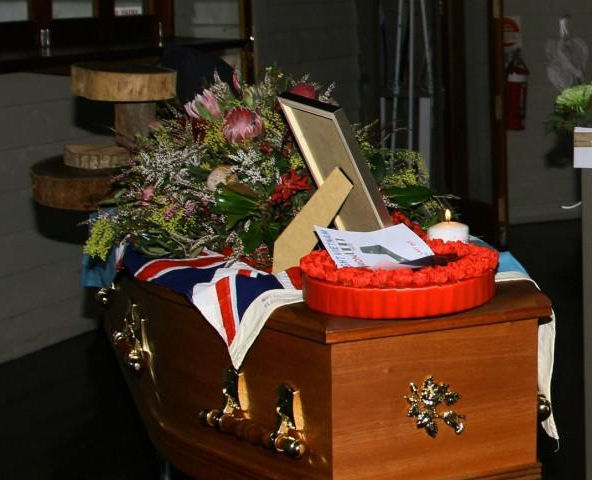
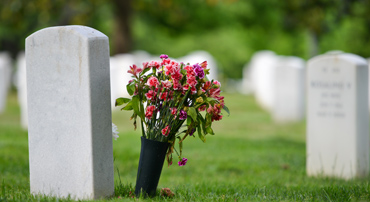
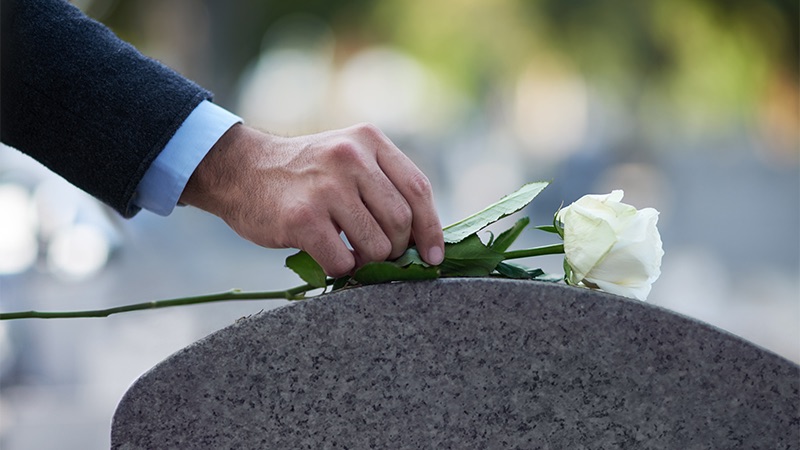
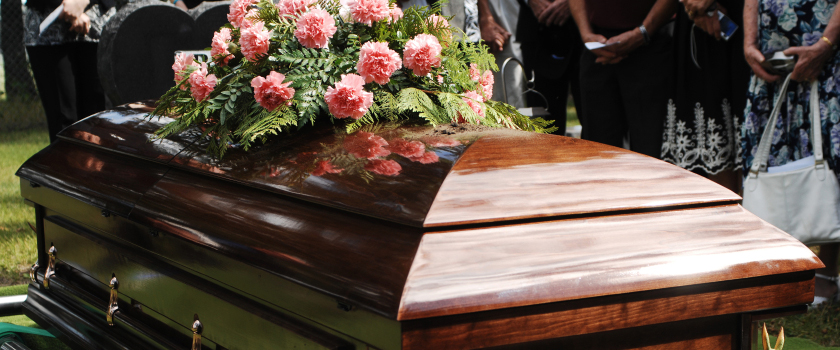
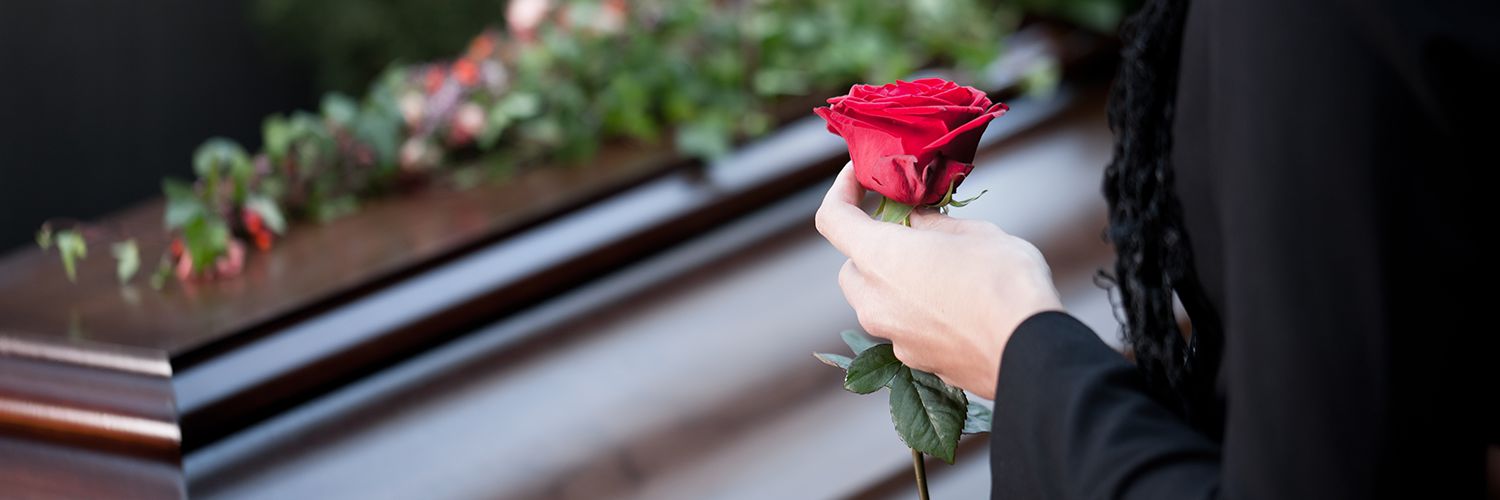
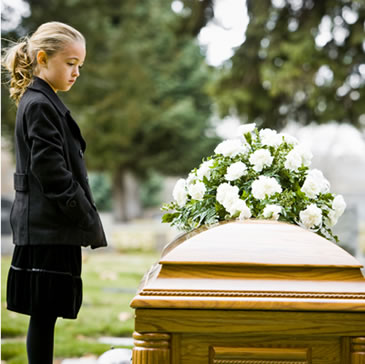 serving or former member at the time of death if there was no wholly
dependent partner at the time.
serving or former member at the time of death if there was no wholly
dependent partner at the time..jpg)
